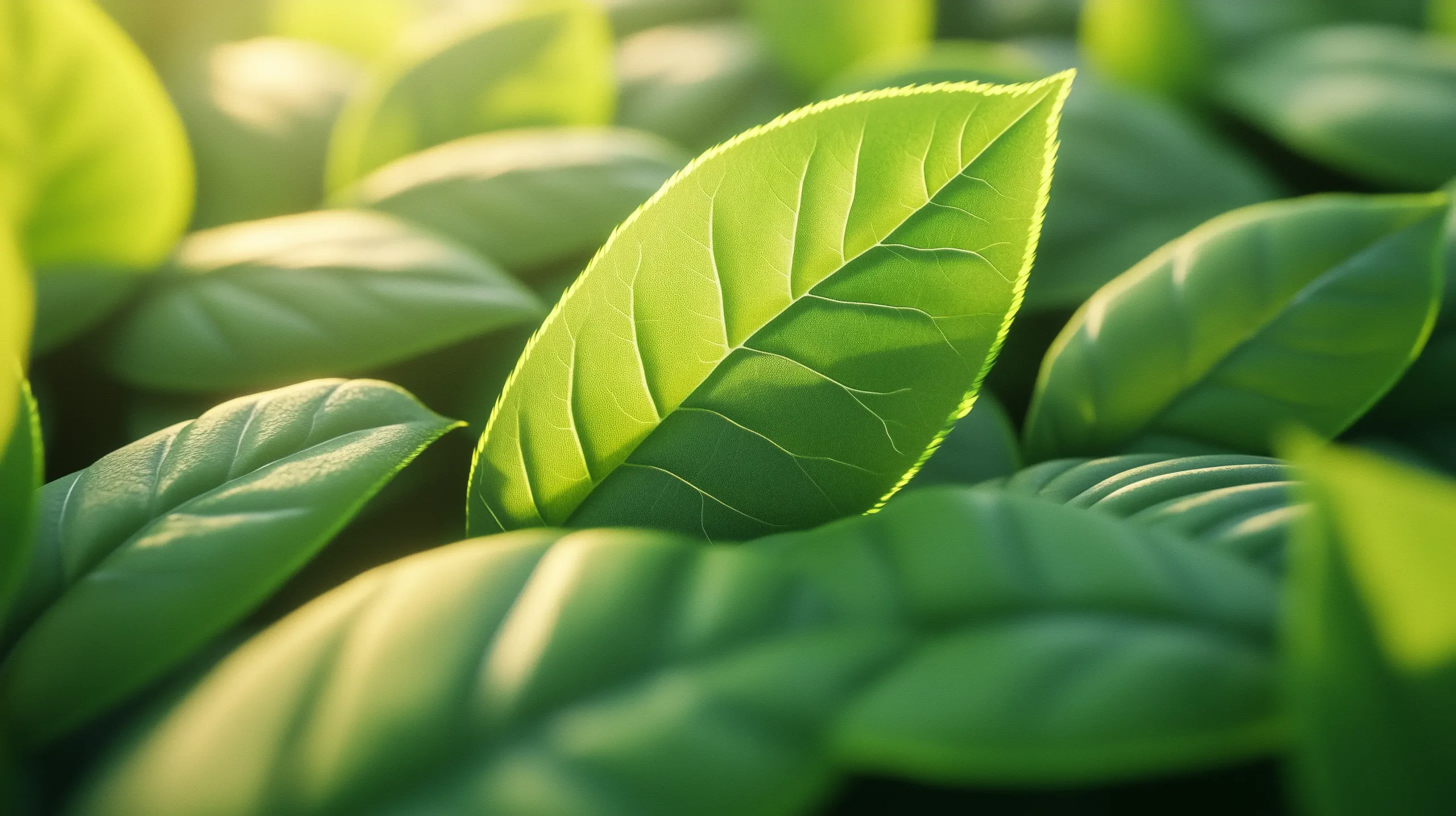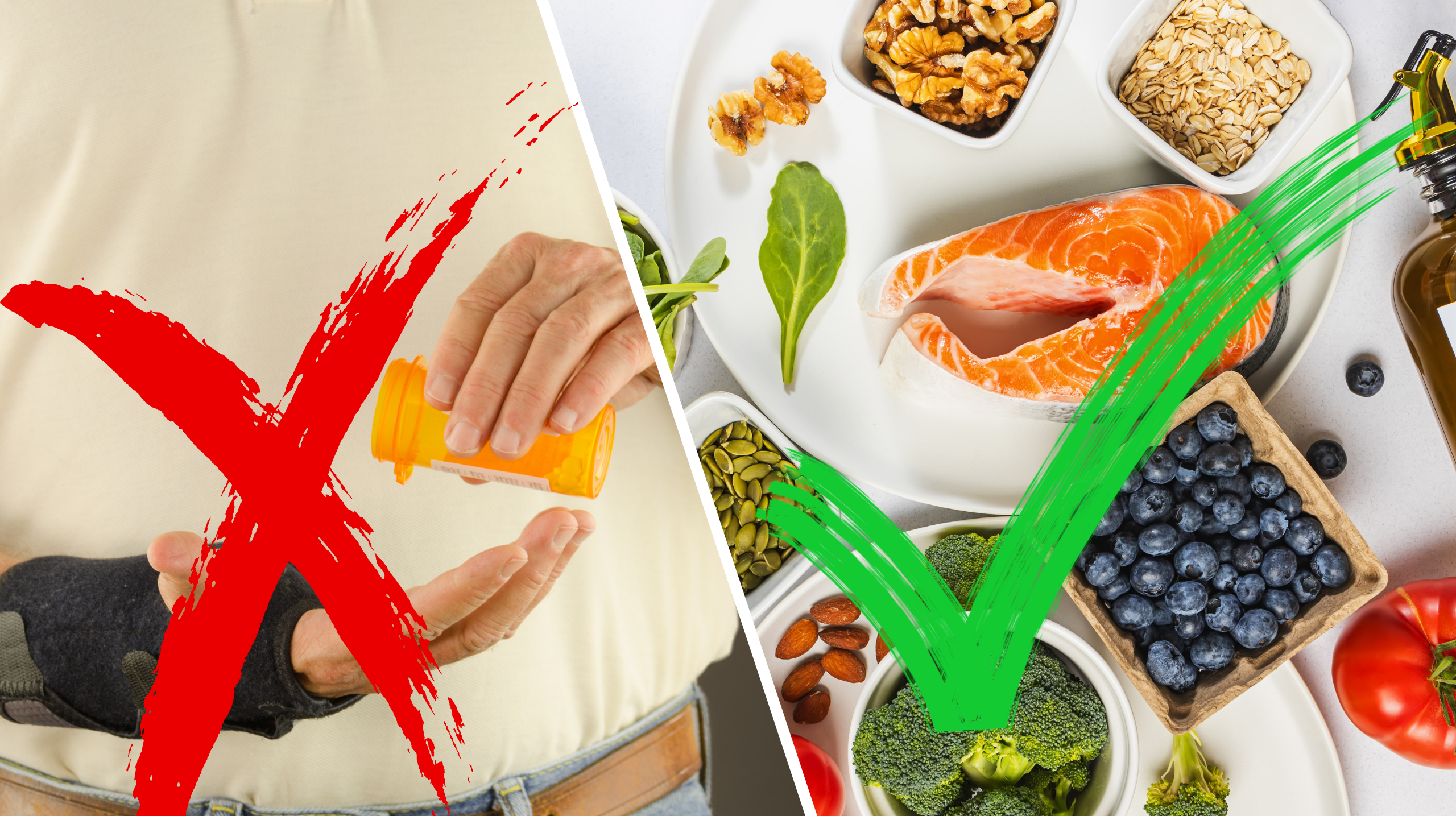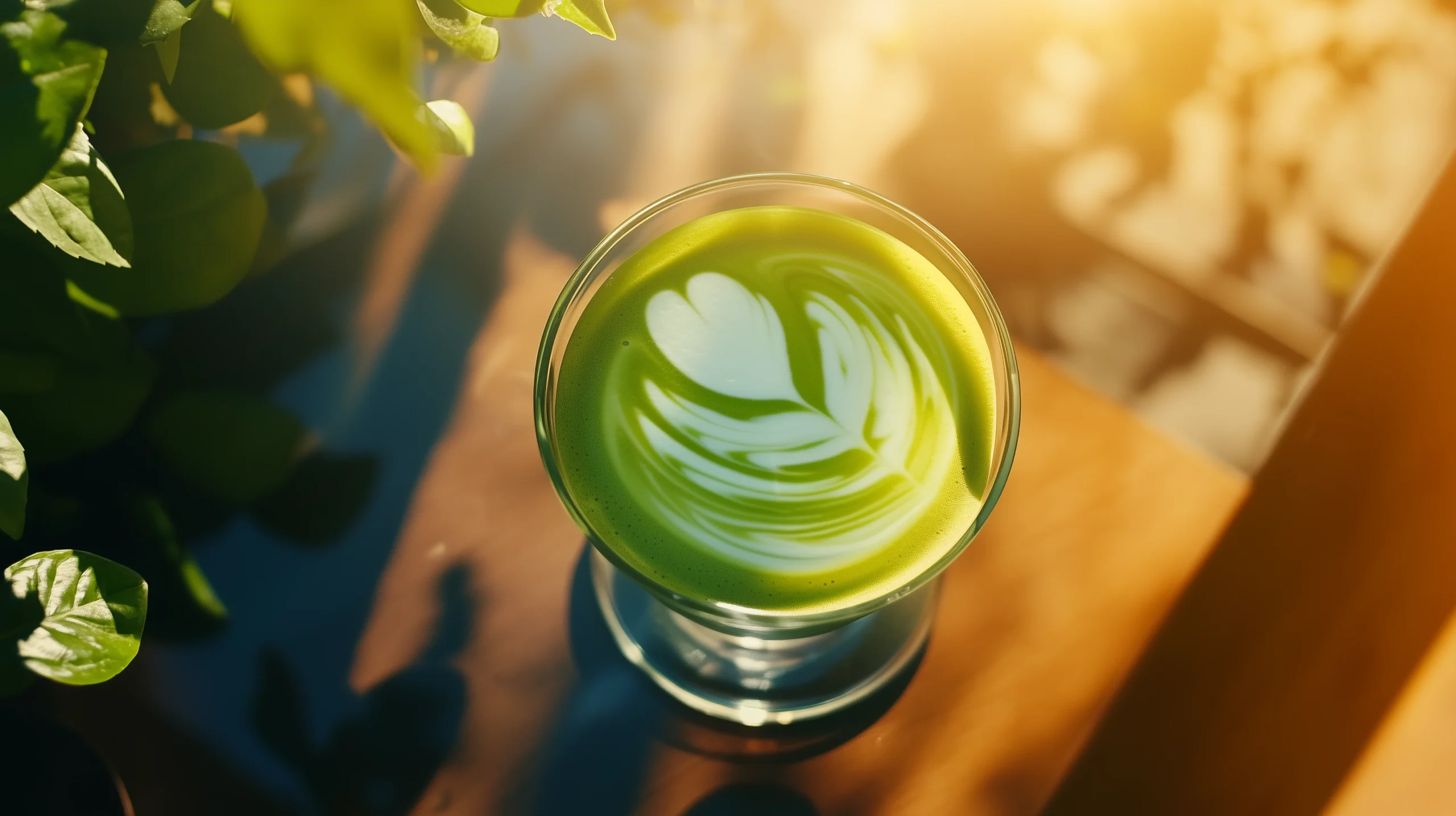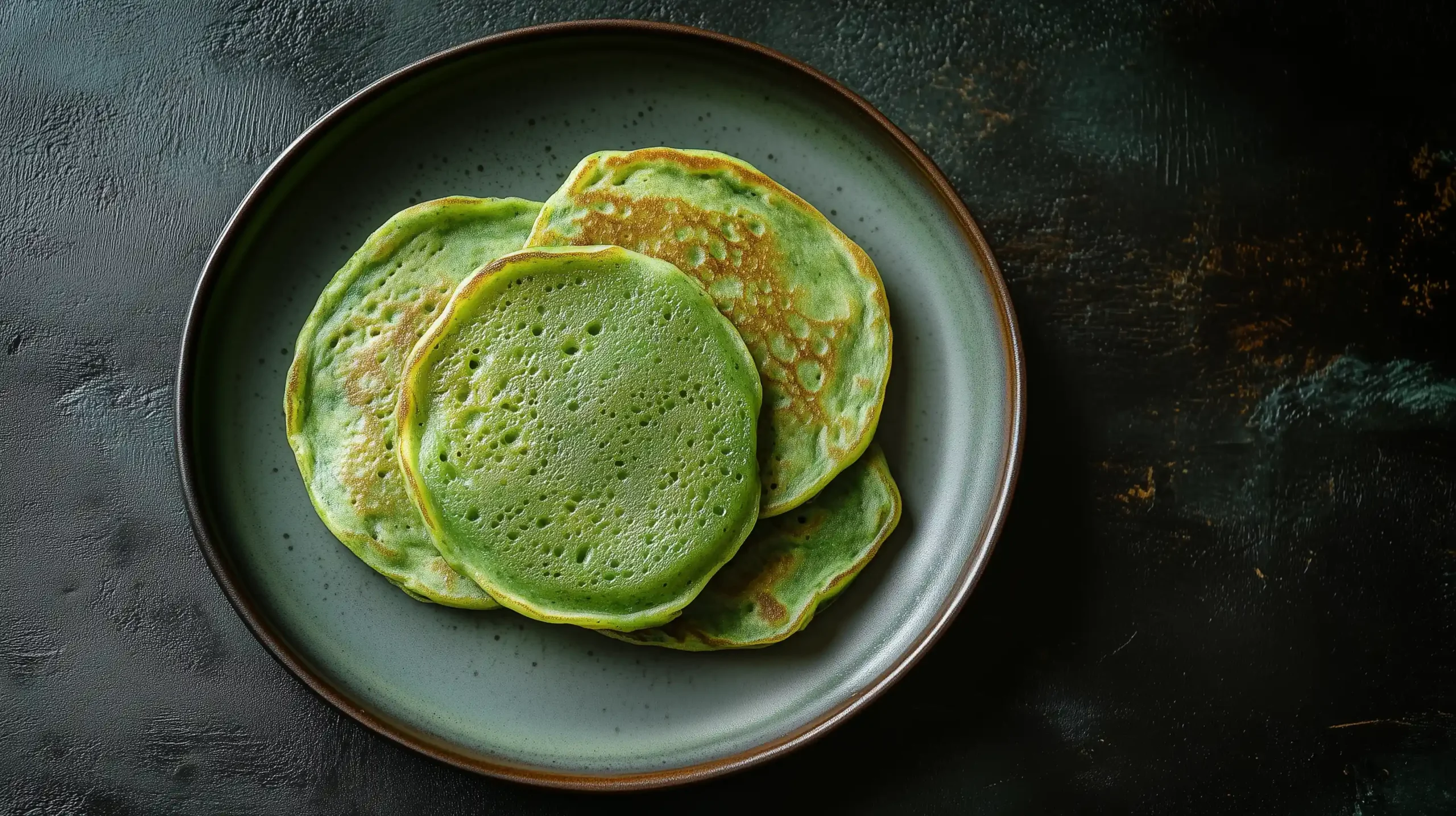An Easy-Read Guide On All Things Matcha
- What Is Matcha?
- History Of Matcha
- The Health Benefits of Matcha
- Matcha Flavor Profile
- Matcha Cultural Relevance
What Is Matcha?
Matcha is the powder version of green tea leaves. It is made from a very rigorous process of grinding the entire tea leaf into very fine powder. The tea leaves used in production are specifically known as the Camellia Sinensis plant, which are shade-grown plants. They are harvested while still quite young to maximize the flavor (more on this later) and nutritional content while also being more tender. These leaves are handpicked by farmers while taking great care of the leaves. Most matcha you will find today is picked during the first harvest of the year, known as Ichibancha.
Ichibancha is the most important of the typically three annual harvests because the leaves are young and tender after winter, slowing their growth due to the cold. This allows for more development time for the leaves, which show in the flavor and nutritional content. Leaves from the first harvest tend to be sweeter and contain high counts of amino acids (including L-theanine), which creates the umami flavor you find in the powder itself.
The Grading System
There are various grades of matcha, which aim to rank the quality of the leaves themselves. Quality is connected to the heights of the leaves on the Camellia Sinensis plant, as the top leaves have had less time to develop. The grade of the powder can be grouped into one of these four categories:
- Standard/Culinary: Used mostly for culinary purposes with matcha flavor (ice cream, pastries, etc.)
- Premium: Used for both culinary purposes and lower-end matcha drinks
- Ceremonial: Used for high-quality matcha drinks and special japanese tea ceremonies
- Super Grade: Often used for very high-end tea ceremonies and tea gifts
History of Matcha
Matcha, at its earliest, points back to a Buddhist monk from the 1100’s who went to practice in China. Upon return to Japan, he brought tea seeds that led to the practice known as “the way of the tea.” This practice was made to combine skill, patience and focus. It was also to honor the beauty within the world, despite so many ugly challenges. Despite originating in China, the word for Matcha is a hybrid of two Japanese words: “Matsu” (to rub) and “cha” (tea). This makes sense as matcha is a ground of tea leaves.
As discussed above, this powder has various grades; however, at that time, matcha was often ceremonial grade and used as a form of celebration. The tea was powdered, added to moderately hot water (~160ºF) and whisked together using a bamboo brush in a specific “W” pattern. The result was a beverage that was well mixed with a frothy (bubbly) coating of small bubbles.
For approximately the next 280 years, Matcha or compressed tea, was an active part of both Chinese and Japanese culture. In 1391 the first emperor of the Ming Dynasty, Zhu YuanZhang, banned the production of compressed tea. This essentially killed the matcha market within China. As a result, Japan took ownership of the large majority of the world’s matcha production, still holding that title today.
China Vs. Japan
Despite being predominantly a Japanese tradition, for generations it was most often associated with Japanese monks and in Zen monasteries. Over the following 200 years, the tradition of matcha made its way out of the monasteries and to common folk. Many believe this to be the origins of the Japanese Tea Ceremony. These ceremonies contain expensive, high-quality teas served in expensive Chinese ceramics called Karamono.
Around this time, the Japanese learned that covering the plants with straw or reeds changes the chemical structure of how they grow. The intention was simply to protect the plants from frost damage. In doing so, they unintentionally created a bright green leaf with a very unique smell and taste. Quality dramatically improved as it decreased the allowances of photosynthesis. Having slowed photosynthesis, they prevented theanine from converting into tannins and creating less bitter leaves with a high umami concentration. Additionally, the shade-grown plants have been known to have high levels of chlorophyll, which creates the bright green color. Until the plants became grown in shade, production typically yielded a brown powder.
Japanese Expansion
Camellia Sinensis plants were centralized to a few locations across Japan (Uji, Kyoto) as recently as 1926. As more and more locations learned these techniques, the footprint spread. The newest addition to the matcha market is the grading system, which helps determine the quality of the powder. The amount of time the leaves have had to develop versus when they are harvested play an important role in the overall quality of the product. While these standards are not regulated by the government or various associations within the industry, the distinction is pretty clear between the first, second or third harvest.
Ichibancha, the first harvest of leaves, is plucked in late April to late May and contains more nitrogen and free amino acids. These directly impact the overall flavor. Nibancha, the second harvest, contains more tannins (converted theanine), which makes the flavor bolder, creating a more bitter taste.
Matcha historically has been ground into the fine powder with the use of stones. When done incorrectly, matcha can be ground too aggressively between the stones, creating a burnt profile with noticeably poorer quality. When done right, commonly done with specially designed granite stone mills, you get a very high-quality, finely crafted powder.
The Health Benefits of Matcha
There are so many unsung, not commonly discussed, health benefits. Today, matcha has weaved its way into the zeitgeist as a coffee alternative for those who either want less caffeine or don’t like the taste of coffee. Because of its positioning, so much of its rich history has gone completely ignored. While we are going to cover many of them here, this is not an exhaustive list.
Immune System Support
Matcha is filled with high levels of antioxidants that actively help protect the body from germs and other pathogens that can snowball into long-term problems
Blood Sugar Management
When we think of blood sugar, we always associate it with diabetics. The truth is that we all have varying levels of blood sugar, and while we may not all need insulin to help regulate your blood sugar, it is important to understand your body’s relationship with your blood sugar. Matcha, thankfully, is a sugar-free product that uses those antioxidants mentioned before that help regulate blood sugar levels and maintain normalcy.
Brain Function
For all your caffeine lovers, this one is for you. Matcha contains both caffeine and L-theanine, which, when ingested into the body, have proven to improve memory and focus while simultaneously decreasing anxiety.
Heart Health
Oxidative stress, or when the body has too many unstable molecules that can damage cell components, is a major contributor to heart health. Antioxidants are the opposing force that keep oxidative stress in check, acting as a regulator within your system.
Weight Loss
Metabolism is the largest regulator of weight within your body. Matcha can help increase your metabolism as well as your energy levels, which in turn will result in burning additional fat within the body.
Skin Health
Dead skin cells should be removed to avoid any potential infections resulting from non-active cells. Matcha can help exfoliate dead skin cells naturally while also reducing the inflammatory response on a topical and subcutaneous level.
Matcha Flavor Profile
The flavor matcha offers is one of the most preferred flavors in the tea realm. It lends itself directly to the fresher, sweeter side of the tea quadrant. On the opposite side, we see a bitter, roasted tea known as Hojicha. The powder tea created from Camellia Sinensis plants tends to have a refreshing, noticeable aroma. Many describe it as fresh green leaves with a rich flavoring of “deep” umami. Umami flavor is often described as a savory, mouth-watering sensation similar to that of cheese, tomatoes, soy sauce and cured meats. Directly translated, it means “pleasant savory taste.” The taste is created by the presence of amino acids (glutamic or aspartic acids) or guanylate, which is most often the case for plant-based products. As a result, you find a very distinct sweet taste and a lasting aftertaste that stimulates salivation.
Matcha Cultural Relevance
According to Google Trends, Matcha has grown in cultural relevance non-stop since January 1st of 2004. The growth remained slow but steady from January of 2004 until February of 2011, where it began its accelerated incline, doubling in conversational importance. That process kept consistent from February 2011 until December of 2014. The four months following December of 2014 saw the cultural relevance of matcha grow by 322%. From April of 2015 to March of 2020, we saw the relevance grow another 250%. Fast forward to where we are today (Q3, 2024) and Matcha has hit its all-time high in cultural relevance.
It is believed that Matcha was introduced into the mainstream for Americans in 2015. The growth of Matcha in 2020 directly correlates with the global pandemic. People were not able to go out to get a premade Matcha, increase the DIY matcha market. The current peak of 2024 relates directly to record high inflation. People are reevaluating if spending $6-$8/ day on a matcha latte at places like Starbucks is in their best financial interest. This is pushing individuals toward rediscovering the alternative value of making matcha at home.
Matcha seems as though it is here to stay. As this chart suggests, it may only be a matter of time before Matcha overtakes the cultural role of coffee. Get ready for a change in the everyday lives of average American citizens.
Ready to Try Matcha?
Experience the health benefits of our Organic Matcha firsthand – CLICK HERE to explore our selection and enhance your well-being.






